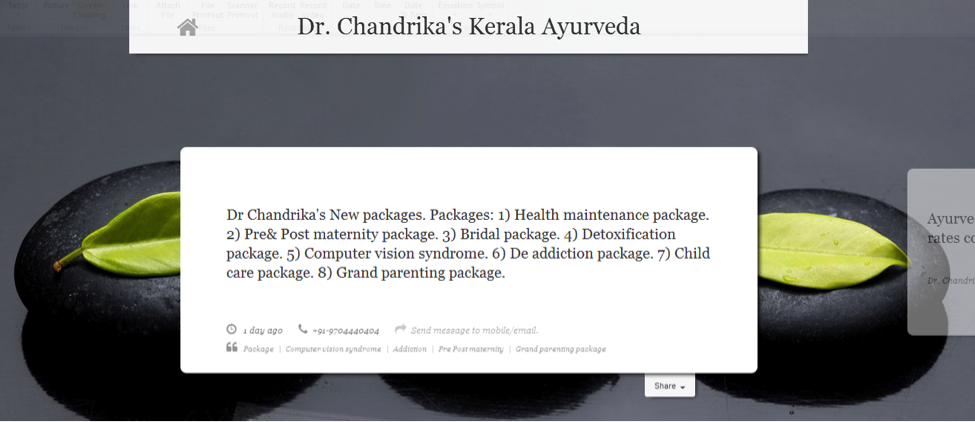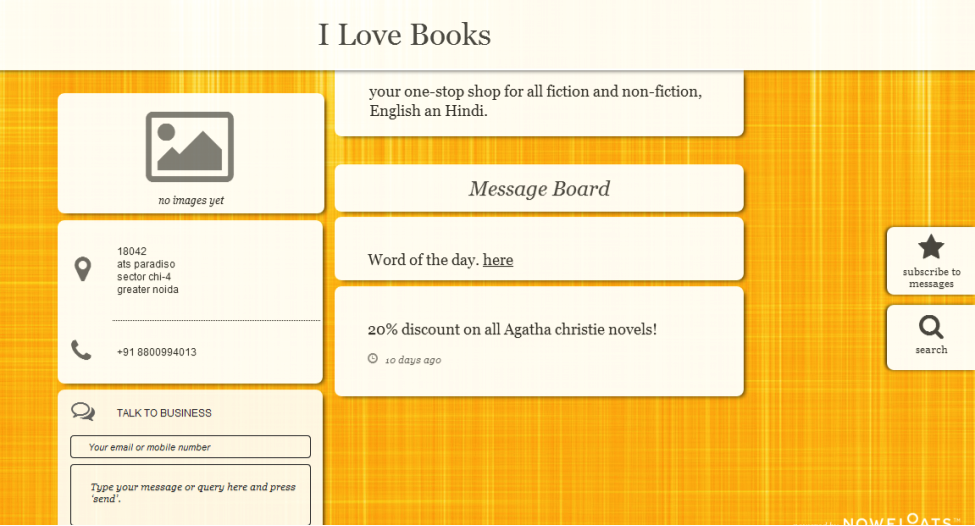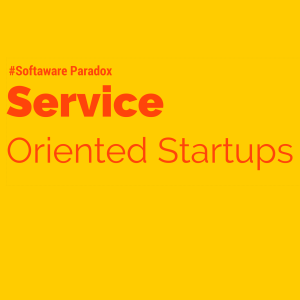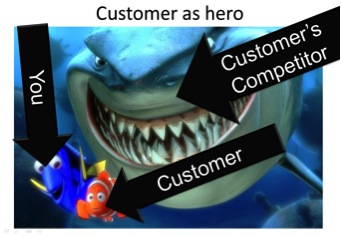NowFloats – Getting small businesses online in 4 SMSes and 13 minutes!
I love clear mission statements, and NowFloats couldn’t be clearer:
9.6 million small and medium businesses need a website. Only 0.6 million have one. That’s 9 million tasks on our desk (and that’s just in India!)
I recently got a chance to catch up with Ronak and Jasminder (Jas), 2 of the cofounders of this exciting company called NowFloats that aims to bring SMBs online, without making them sweat over it (other 2 co-founders are Nitin Jain and Neeraj Sabharwal) . NowFloats is a team of 20 (4 founders, 4 tech, others in sales and support), based out of Hyderabad, though their customers are spread all over India. Overall, I was very excited by what I listened and saw, I sense that NowFloat holds immense possibilities for small businesses and has all the right ingredients to be successful in its mission.
The problem for small businesses
Given increasing reliance of users on search, it is becoming important for offline small businesses to have an online presence. An online presence needs to have discoverability (users know that you exist), engagement (users interact with you and like you), and conversion (users visit your offline business). However, when creating such an online presence, a small business has to grapple with 3 problems:
- Creating a website takes too much time and effort – even for tech-savvy type, which a small business owner is not.
- Updates require engaging website developer again – too much effort and dependency
- Online marketing is hard and expensive, and requires digital marketing expertise, not something a small business owner has
Standard option currently for a small business is to do nothing about online presence; very few businesses hire someone to create, maintain and market their site which is very expensive option without clear ROI.
NowFloats solves this problem for small business in an easy-to-use manner at an extremely affordable pricing.
NowFloats Promise
NowFloats promises to allow a business owner to create a website in 4 messages and in less than 13 minutes – send the name and address of your business, website name you desire, and your website is ready to use!  If you wish to update the site (messages on message board or updating any of the original details you provided while creating the site), it is as simple as sending another message.
If you wish to update the site (messages on message board or updating any of the original details you provided while creating the site), it is as simple as sending another message.
It may look like a simple and easy website to create, but it packs a lot of punch:
- Site and every message are geo-tagged, which means local searches will show up your website and deep-link to your message.
- Your website and each message is search engine optimized
- Each update is a page so it can be shared by your customers on social networks, which again has endless social, search and business possibilities.
- Visitors can subscribe to get all subsequent updates, or leave message for you to follow up with them

NowFloats – The Product
Design: NowFloats is a very well-designed product. Their company website as well as the customer sites are beautiful in their minimalist and pleasing design.
Technology: They have a scalable architecture, built using Microsoft technologies. They have 4 patents filed and 2-3 are on the way. They offer subdomains under nowfloats.com in addition to allowing customers to use their own domain names if they wish – like Body Granite Gym and The Courtyard & Cafe Courtyard do.
Analytics: They care deeply about analytics that customers get about their online visitors. Businesses get weekly information about how their site is doing (# of page views in a week). On their product roadmap, they have features to provide details like which messages got max view, keywords which generated maximum views, etc., goal being to show what type of content is attracting maximum traffic.
Pricing: Pricing Plans (5K to 12.5K a year) are very competitive, given that even hosting a site costs 3-5K a year. NowFloats is still reviewing pricing strategies based on market feedback so expect this to change soon.
Test-driving NowFloats
As I took the service for test-drive, here are my impressions:
- It is very easy to set this up indeed. I was up and running with http://ilovebooks.nowfloats.com/ in less than 10 minutes.
- As soon as the site was created, I got a call from their customer service. They wanted to confirm my identity and walk me through the next steps, including collecting payments.
- I realized I picked a wrong name for my business, so I wanted to change. A call to customer support informed me that they will have to do the change for me, though an app is coming which will allow self-service. Later I found it was only partially true, the name (and many other details of the business) can be updated through SMS messages even now. I promptly used the service.
- I wanted to update the site using my laptop, but changes can only be done using SMS, upcoming app, or customer support. I find this a little annoying.
- I tried to get creative and sent an html fragment as an SMS message, which created a broken message on the site. Given that I can’t update it online; this requires me to call customer support. Later I was told how to do this, and also given the current target audience, this is not an often used feature.

Customer Acquisition
Clearly small businesses see value in NowFloats offering. In a short span, they have 1600+ customers live, including customers like Hazzel Ice Cream Cafe and Dr. Chandrika’s Kerala Ayurveda . I was fascinated by the variety of customers they have attracted, including my favorite restaurant in Hyderabad, a Nokia Priority franchisee, and even a personal branding site. These sites are discoverable (through geo-tagging, auto-generated tags and other SEO techniques, sites and messages come up in ahead in all search results) and drive engagement (users subscribe to the messages, businesses get notified when someone subscribes or shows an interest). Conversion (people visiting the business) is hard to track and NowFloats team is working on some solutions that will allow such tracking.
NowFloats has multiple approaches and channels to acquire customers:
- Geography: Started out with targeting Hyderabad businesses. Currently they are focused on Bangalore businesses. The goal is to have pan-India sales presence soon through partnerships and other means and continue to expand city by city.
- Catagory: One of the innovative ways they target a particular category is to target the franchise business owners of a particular brand. For example, they have brought many Nokia Priority franchisee owners online, same with Printo. Given the huge number of franchisees in India, this seems to be a winning sales strategy.
- Partnerships: They have a shop-in-a-shop model with Printo. Since Printo serves much of the same customer segment as NowFloats but with a complimentary service, this is a great move to gain customers. They are exploring similar partnerships with complimentary service providers.
Couple of other things I would like them to focus on:
- Online Presence: I can’t discover NowFloats online. Google search for getting my business online didn’t say anything about them in first 3-4 pages. I think they need to make their discoverability better as they go forward.
- Social: Small businesses thrive on communities and loyal customers who like the service they get. One of the best ways to reach small businesses is to tap into this community and loyal customer base, through social or other platforms. I would love to introduce NowFloats to the small shops I visit near me, but there is no good way for me to do so.
Competition and Differentiation
When I researched around, surprisingly, there aren’t many cost effective ways for small businesses to create online presence. India Get Online program from Google aims to get Indian businesses online and are a viable option for a small business. However, I think NowFloats offers a more targeted and sustainable product, that can potentially complement the Google offering.
Google’s strategy is to get a basic site up for you so that you are visible in local searches, to stay visible. NowFloats focuses on getting a site for you and market it online for you, thus helping you stay focused on what you do best – run your business.
What Future holds for NowFloats
I see NowFloats extending itself in 3 areas:
- Richer Eco-system: NowFloats plays in the local search space through their mobile app. A successful ‘NowFloats for business’ means rich data about local businesses available for their app to make use of. Controlling the supply of rich data from small, local businesses has lots of grand possibilities.
- Richer Revenue Models: Currently, there revenue is subscription-based, and it may be hard to show how an investment of 12500/- per year translates into increased traffic (and revenue) in their offline business. Their goal is to evolve newer revenue models that can directly tie NowFloats revenue with SMBs revenue, thereby creating a symbiotic and sticky relationships.
- Richer engagement with businesses – Businesses need many services as soon as they realize the potential of an online presence. Selling online, driving deals, building software solutions for their businesses, etc. all can be offered once the business is on-boarded.


Power of an idea lies in simplicity and pervasiveness. After I talked to NowFloats team, I have been observing small shops around me in a new light. If the great little corner shop selling briefs could be easily discoverable, If my favorite restaurant in Greater Noida could be more engaging, if the grocery shop in my apartment complex had an easier way to let me know of his deals, I am sure these businesses would benefit immensely. And it is so simple for them to do so now – by using NowFloats. Nowfloats is a very powerful idea whose time has come – may all the power be with small businesses and NowFloats!
 book is, that the value of software as a product is diminishing, but the value of software as an enableris rising. Pure play software companies such as Microsoft and Oracle are fading in comparison to rising stars such as Google, Facebook, Apple, Amazon and newer ones like Uber, Dropbox, GitHub, AirBnB and others. None of the new age companies sell “software”. They all sell a service (or devices, in case of Apple).
book is, that the value of software as a product is diminishing, but the value of software as an enableris rising. Pure play software companies such as Microsoft and Oracle are fading in comparison to rising stars such as Google, Facebook, Apple, Amazon and newer ones like Uber, Dropbox, GitHub, AirBnB and others. None of the new age companies sell “software”. They all sell a service (or devices, in case of Apple).











